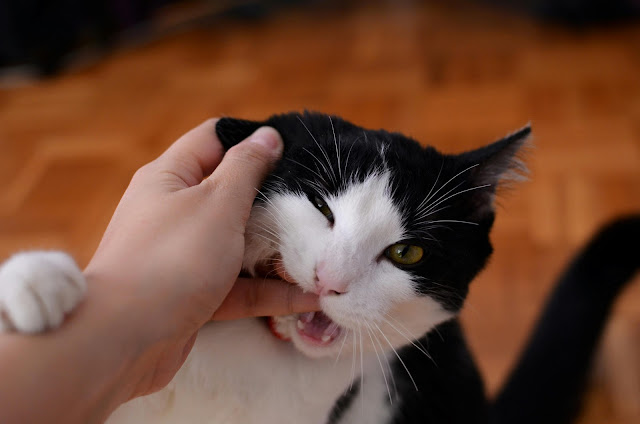How Cats Communicate: The Secrets of Feline Body Language
How Cats Communicate: The Secrets of Feline Body Language
Cats are known for their mysterious and independent nature, which often leaves us guessing about their feelings. While they may not speak our language, cats communicate effectively through their body language. Understanding these subtle cues can deepen the bond between you and your feline friend. Let's explore the secrets behind how cats communicate through their body language.
1. Tail Position
The tail is one of the most expressive parts of a cat’s body, and its position can reveal a lot about their emotions.
- Upright Tail: A cat with its tail standing tall, often with a slight curve at the tip, is feeling confident and happy. This is typically a sign of friendliness and contentment.
- Puffed-Up Tail: If your cat’s tail suddenly puffs up, it's a clear signal that they feel threatened or scared. It’s a defensive posture, often accompanied by a hissing sound.
- Low or Tucked Tail: A tail held low or tucked between the legs suggests fear, anxiety, or submission.
- Slowly Swishing Tail: A slow, gentle swish often indicates that your cat is focused or curious, such as when they are stalking prey (or their favorite toy).
2. Ear Movements
Cats' ears are incredibly expressive and can shift positions to indicate a wide range of emotions.
- Forward-Facing Ears: When your cat’s ears are facing forward, they are alert, curious, or content.
- Flat or Backward Ears: Flattened ears usually indicate fear, irritation, or aggression. It's a sign that your cat might be preparing to defend itself.
- Twitching Ears: Rapid ear movements, especially twitching, show that your cat is anxious or overwhelmed by their surroundings.
3. Eyes and Pupil Size
A cat’s eyes can give you valuable insights into how they are feeling.
- Slow Blinking: If your cat slowly blinks at you, they’re expressing affection and trust. This is often referred to as a “cat kiss” and is a great way to communicate back by slowly blinking in return.
- Dilated Pupils: Wide, dilated pupils can signal excitement, fear, or even surprise. If your cat’s eyes are wide open during play, it’s likely they’re feeling energetic and engaged.
- Narrowed Eyes: When a cat squints or narrows its eyes, they may be feeling defensive or aggressive. However, this can also occur if they’re experiencing pain, so it’s essential to observe other body language cues to understand the context.
4. Posture and Stance
The way your cat holds its body speaks volumes about their mood.
- Arched Back: A classic sign of fear or aggression, an arched back with fur standing on end is a cat's way of appearing larger when they feel threatened.
- Relaxed Body: A cat lying down with a relaxed posture is feeling comfortable and at ease. If they expose their belly, it’s a sign of trust, although it doesn’t always mean they want belly rubs!
- Tense or Crouched Posture: A crouched body with tense muscles may indicate that your cat is ready to pounce or defend itself. This is common when they are unsure about their environment or when they feel cornered.
5. Vocalization and Body Language
While this article focuses on body language, it’s important to note how vocalization complements it.
- Meowing: Cats meow for various reasons, often to get your attention. Pairing this with body language—such as rubbing against you or an upright tail—can indicate that your cat is seeking affection or food.
- Hissing or Growling: When accompanied by flattened ears and an arched back, hissing is a strong signal that your cat feels threatened and wants to be left alone.
6. Whiskers
Whiskers might not be as obvious, but they also play a role in feline communication.
- Forward-Pointing Whiskers: When your cat’s whiskers are pushed forward, they are curious or interested in something.
- Whiskers Pulled Back: Whiskers pulled back against the face usually indicate fear or discomfort, suggesting that your cat is wary of its surroundings.
Conclusion
Understanding your cat’s body language is key to building a closer relationship with them. By paying attention to their tail, ears, eyes, posture, and even whiskers, you can gain valuable insight into their emotions and needs. The next time your cat is acting a bit mysterious, take a moment to observe their body language—it might reveal more than you think!
.png)







.jpeg)



